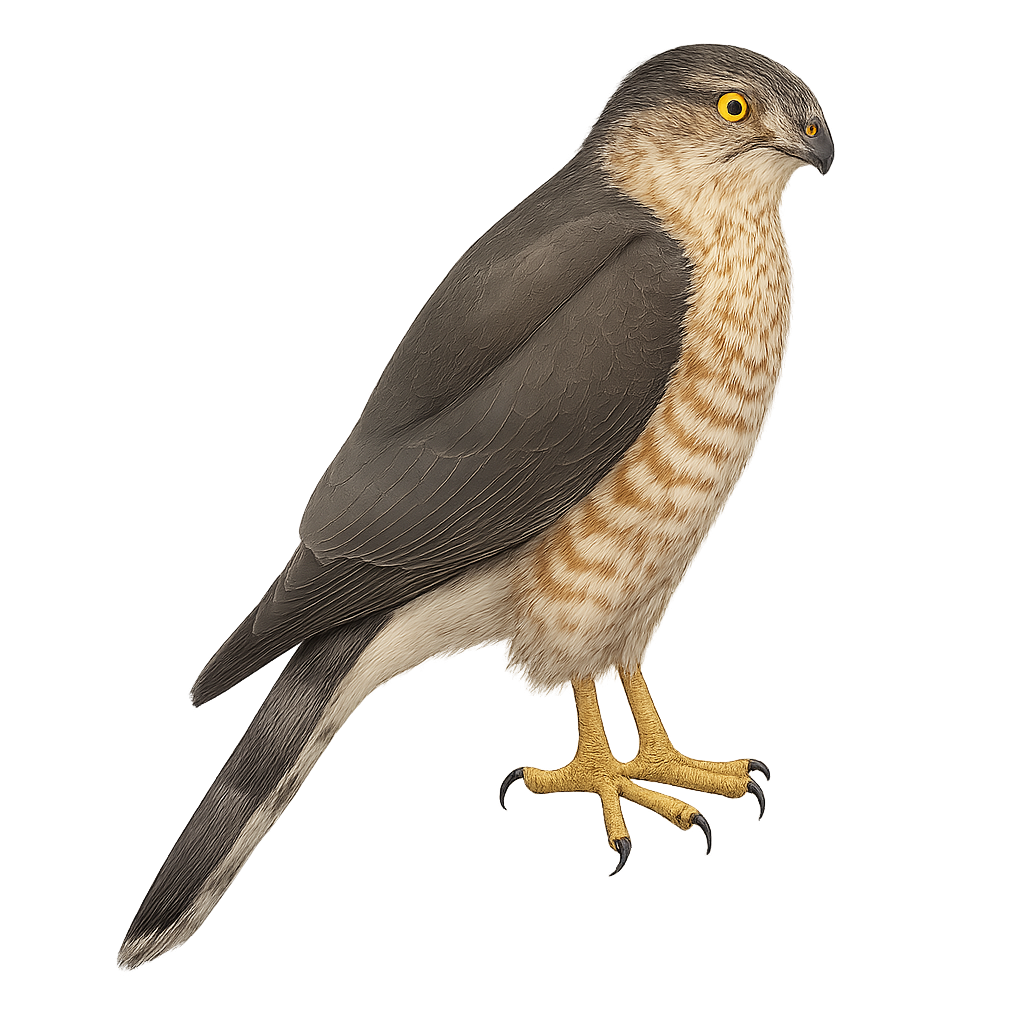Your wildlife photography guide.
Explore the cooper's hawk in detail, study its behavior, prepare your shots.
Where to observe and photograph the cooper's hawk in the wild
Learn where and when to spot the cooper's hawk in the wild, how to identify the species based on distinctive features, and what natural environments it inhabits. The WildlifePhotographer app offers tailored photography tips that reflect the cooper's hawk’s behavior, helping you capture better wildlife images. Explore the full species profile for key information including description, habitat, active periods, and approach techniques.
Cooper's Hawk
Scientific name: Astur cooperii

IUCN Status: Least Concern
Family: ACCIPITRIDAE
Group: Birds
Sensitivity to human approach: Suspicious
Minimum approach distance: 10 m
Courtship display: April to June
Incubation: 32-36 jours
Hatchings: May to July
Habitat:
Forests, urban areas, woodland edges
Activity period :
Primarily active during the day, with peak activity in the morning and late afternoon.
Identification and description:
The Cooper's Hawk is a medium-sized raptor known for its sleek body and rounded wings. Its plumage is mostly bluish-gray on the back with reddish barring on the underparts. Adults have striking red eyes, while juveniles have yellow eyes. This agile predator is often seen flying through dense forests or hunting in urban areas. It primarily feeds on birds and small mammals. Its adaptability to various environments makes it a resilient bird, although habitat destruction poses a potential threat.
Recommended lens:
400mm – adjust based on distance, desired framing (portrait or habitat), and approach conditions.
Photography tips:
To photograph the Cooper's Hawk, it is advisable to use a telephoto lens of at least 400mm to capture detailed images from a distance. Look for it in forests or urban parks, where it is often hunting. Be patient and discreet, as this bird can be suspicious. Use a tripod to stabilize your camera and adjust the shutter speed settings to capture its fast flight. Take advantage of the golden hours in the morning or afternoon for soft, natural lighting.
The WildlifePhotographer App is coming soon!
Be the first to explore the best nature spots, track rutting seasons, log your observations, and observe more wildlife.
Already 1 439 wildlife lovers subscribed worldwide

